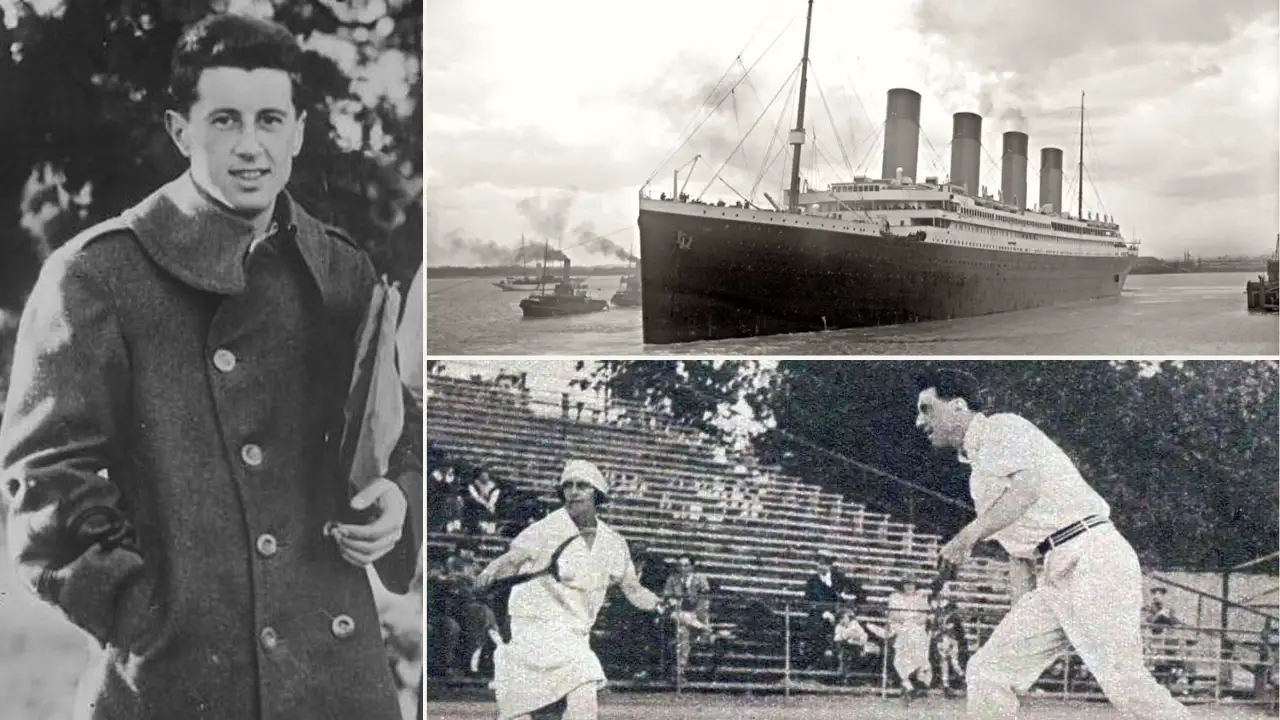By Ishita Roy
Wimbledon is where legends are made. Each summer, as the oldest and most prestigious tennis tournament unfolds spectators witness grace under pressure, unmatched endurance, and timeless rivalries. While we associate ourselves with the players we support, but how much do we really know about them? Because this is one such story of the Tennis player Richard Dick Norris Williams II, and about the other side of his life, where he survived one of history’s greatest maritime disasters: the sinking of the Titanic. A Prodigy with Privilege Richard Norris Williams II was born on January 29, 1891, in Geneva, Switzerland. He was the son of American expatriates Charles Duane Williams and Lydia White. In all Richard led a privileged life in Europe. He was educated in elite private schools and quickly distinguished himself — not just in the classroom but on the tennis court. It was his father, Charles, who introduced him to tennis, and it didn’t take long for Richard’s natural talent to shine. By age 20, he had already claimed victory at the 1911 Swiss Open Singles. Ambitious and gifted, Richard’s next step was to further his academic and athletic career in the United States, enrolling at Harvard University. But fate had other plans — and they would involve the RMS Titanic. A Ticket to Tragedy In the spring of 1912, the Williams family prepared to return to the United States due to Charles’ declining health. A bout of measles delayed Richard’s travel plans, but once recovered, he and his father booked first-class tickets aboard a brand-new ocean liner touted as “unsinkable”: the RMS Titanic. They boarded on April 10 in Southampton. For four days, the journey was smooth. First-class cabins, lavish meals, and luxury at sea — nothing hinted at the nightmare to come. But on the night of April 14, at 11:40 PM, the Titanic struck an iceberg. Confusion, disbelief, and icy panic spread throughout the ship. The Night When Titanic Sank Richard and his father were jolted awake by the collision. Stepping into the corridor from their C-Deck cabin, they joined passengers searching for answers. Along the way, they came across a woman trapped in her flooding cabin. Without hesitation, Richard broke down the door to free her — a heroic act, though ship stewards threatened him with fines for damaging property. They brushed off the threats and continued toward the ship’s gym, where many passengers had gathered in desperation. The water kept rising. Eventually, father and son moved to the upper deck, realizing the situation was dire. Then, in an act that would alter his life forever, they leapt into the freezing Atlantic. Richard survived the plunge. His father did not. As they hit the water, one of the Titanic’s massive funnels crashed down, killing Charles instantly and pushing Richard further away from the sinking wreck. From The Freezing Waters… “I was not underwater for very long,” Richard later said in an interview. “As soon as I came to the top, I threw off the big fur coat. I also threw off my shoes. About twenty yards away, I saw something floating and swam towards it.” That “something” was a damaged lifeboat. It was partially submerged but enough to cling to for dear life. He joined other survivors in the icy blackness, waist-deep in water, waiting, hoping. Hours passed. Then, on the morning of April 15, salvation arrived in the form of the RMS Carpathia. Of the 2,240 passengers and crew aboard the Titanic, only 706 survived. Richard Norris Williams was among them — but barely. Against All Medical Odds Doctors aboard the Carpathia examined Richard’s severely frostbitten legs. The prognosis was grim: amputation. But Richard refused. “No sir, I’m going to need them,” he said. Over the next four days, he refused to sit still. Every two hours, he walked around the ship’s deck, forcing circulation back into his damaged limbs. Once in New York, he continued his self-imposed rehabilitation. And it worked. Just nine weeks after the Titanic sank, Richard entered the Longwood Bowl Tennis Tournament in Boston. In an eerie twist of fate, he faced Karl Howell Behr — another Titanic survivor. Richard lost that match but would have his revenge two years later at the US Nationals. A Tennis Legend Is Born Despite the trauma and lingering physical damage, Richard pursued tennis with renewed determination. In 1914, he won the US Nationals men’s singles title. He defended the title in 1916 and added doubles wins in 1925 and 1926. In 1920, he won the Wimbledon men’s doubles title — cementing his status as a global tennis star. Four years later, he won Olympic gold in mixed doubles at the 1924 Paris Games with partner Hazel Hotchkiss Wightman. He also helped the U.S. Davis Cup team to five victories. A Hero Beyond the Court When World War I broke out, Williams joined the French Army and served on the Western Front. His bravery earned him France’s highest honors: the Chevalier de la Legion d’Honneur and the Croix de Guerre. After the war and the height of his tennis career, Richard transitioned to a quieter life. He became an investment banker and eventually settled in Pennsylvania. He died of emphysema on June 2, 1968, at the age of 77. His wife, Sue Williams, was buried beside him in 2001.
